| Primary and Secondary Structures - Meteorites |
Graphite and Troilite nodules |
| Return to Contents |
| Back...Next |
| Meteorite - Shawnee, Mount Dooling, Pizhanka, Cape York, Odessa |
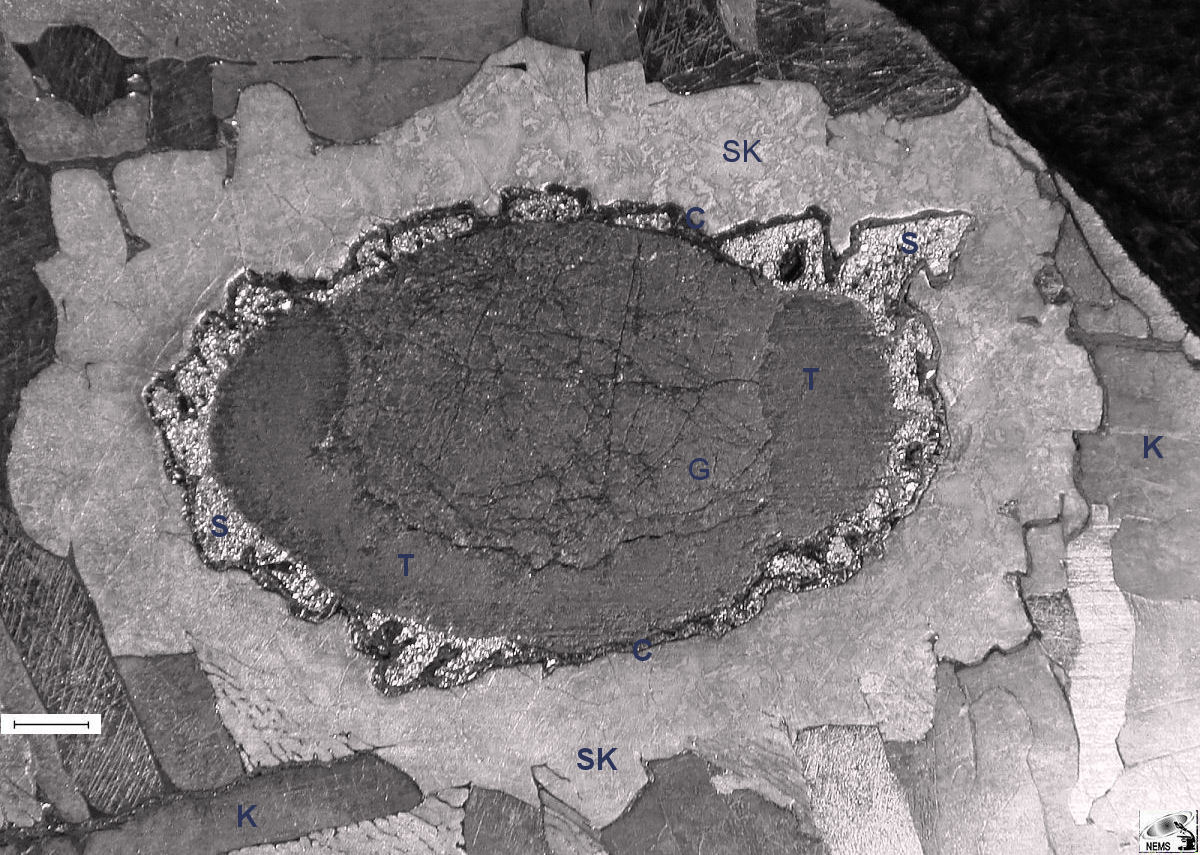
| Figure 1. Scale bar 2.5
mm. Meteorite - Shawnee Graphite/troilite nodule - Can be either Primary or Secondary. |
| G - Graphite |
| T - Troilite |
| S - Schreibersite |
| C - Cohenite |
| K - Kamacite |
| .SK - Swathing Kamacite |
| . |
| . |
| Nodules in iron meteorites
can be classified as either primary or secondary structures. Primary nodules originate during the initial solidification of the meteorite's parent body. They are typically composed of kamacite, taenite, troilite, and occasionally schreibersite, reflecting the early mineral assemblage of the cooling mass. Secondary nodules, in contrast, form after the initial cooling phase, often resulting from shock metamorphism (such as impacts) or the alteration of primary phases. These may represent primary structures transformed by heat-induced shock into secondary forms or arise from distinct events in space. Though often in trace amounts, their mineralogy largely mirrors the original parent meteoroid. The parent mass likely began as a large single or twinned austenite crystal, but it was not a pure Fe-Ni alloy. It contained low to trace phosphorus, carbon, cobalt, sulfur, and chromium levels. Late in the primary cooling phase, these elements facilitated the nucleation and precipitation of a new suite of minerals-such as phosphates, sulfides (e.g., troilite), schreibersite, cohenite, and others-marking the formation of primary nodules. Nodules that emerged after the molten metal phase had solidified are considered secondary structures. cohenite rims precipitated from carbon. During cooling, sulfides like troilite may become trapped in elongated interstices within the metal, while schreibersite and cohenite nucleate and form rims around the troilite/graphite core. This description broadly applies to Type I, II, and III iron meteorites, though further refinement would be necessary to address the specifics of each type. The presence and abundance of minerals like schreibersite depend on factors such as the bulk sulfur content of the meteorite. This mineral suite appears in most meteoritic nodules, though sometimes only as isolated grains. Physically, nodules vary from a millimeter to over 10 cm in size and often exhibit a layered structure. This typically includes a rounded or elongated core of troilite or graphite, enveloped by rims of schreibersite, and frequently followed by more massive rims. Sulfides like troilite can be trapped in elongated interstices in the cooling metal. From there, the nucleation of schreibersite and cohenite would precipitate into rims around the troilite/graphite "core". |
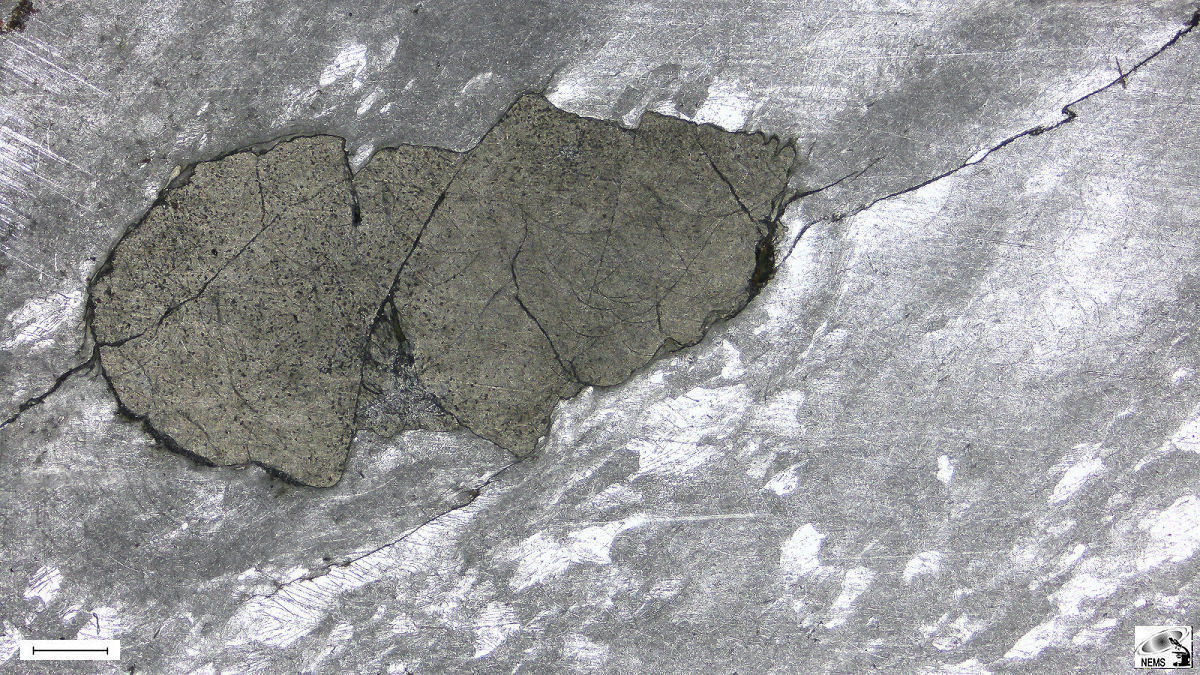 |
| Figure 2. Scale bar 1
mm. Meteorite - Mount Dooling Classification - Iron, IC, 6.26% Ni. Troilite nodule - Primary structure, mostly. |
| Mount Dooling is a partially recrystallized coarse octahedrite. This image is of a sheared troilite nodule that has been shock-melted dissolving part of the surrounding metal in the process. The troilite nodule is (likely) primary but the shearing and recrystallization are secondary effects.. |
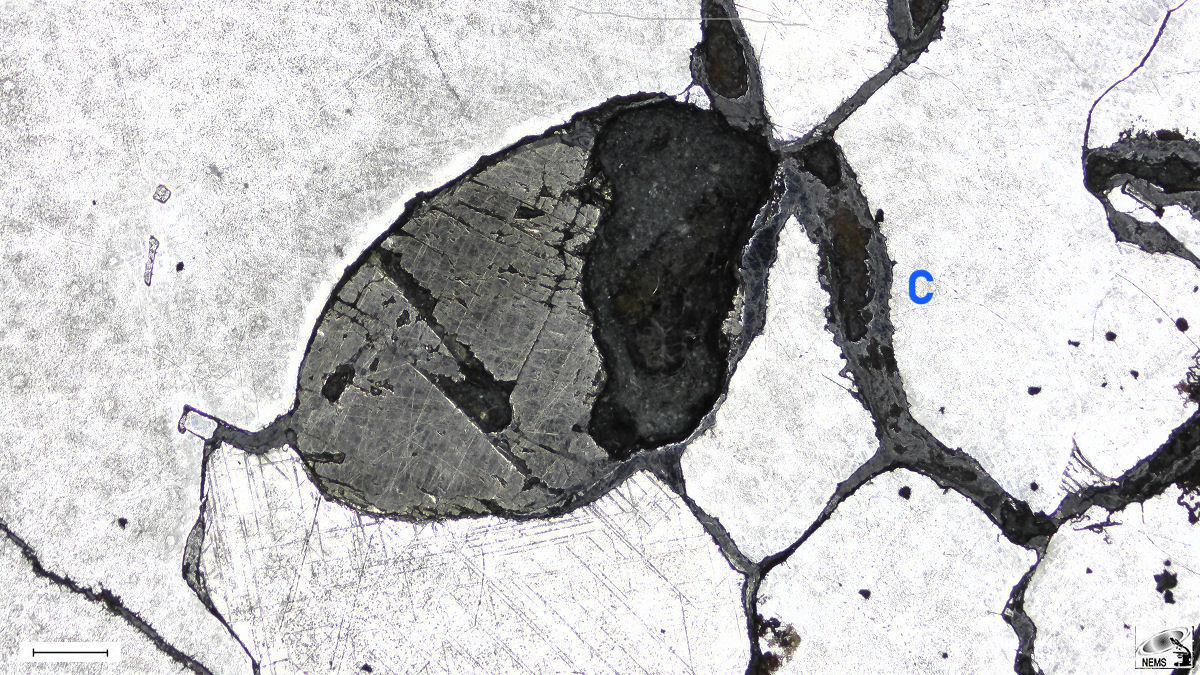 |
| Figure 3. Scale bar 700 µm.
Meteorite - Pizhanka Classification - Iron, IAB - Mg, 7.40% Ni. Troilite nodule - Primary / secondary. |
| Very little research has been published on this meteorite found in Russia in 2016. In this photograph, patches of recrystallized kamacite surround a troilite/graphite nodule. Note the Neumann lines, lower middle, and the serrated cohenite edges (C). |
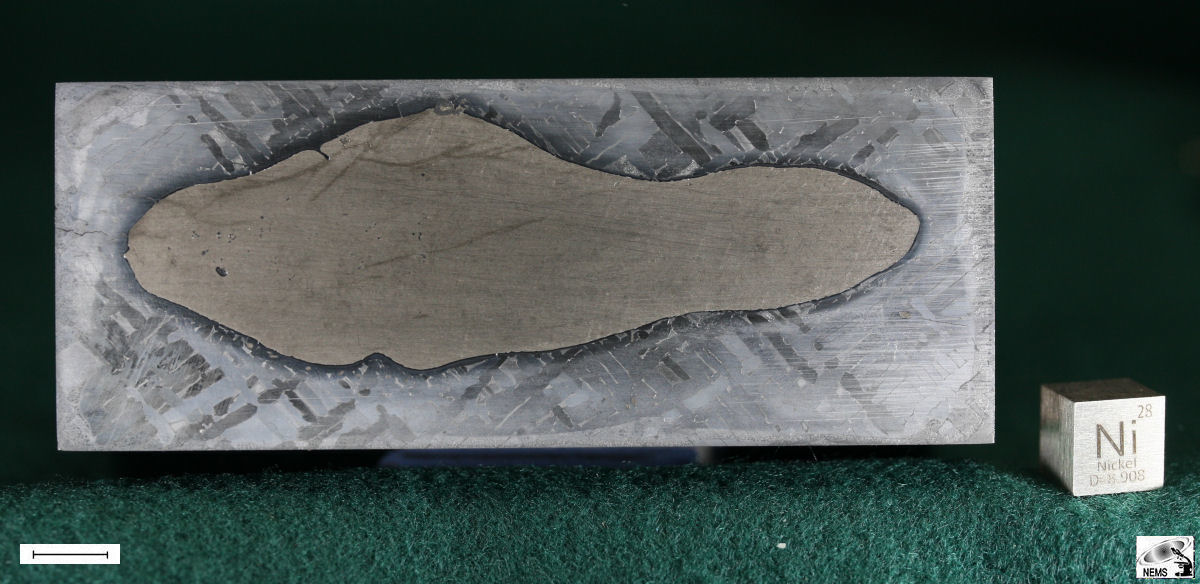 |
| Figure 4. Scale bar 8
mm. Meteorite - Cape York Classification - Iron, IIIAB, 7.34% Ni. Troilite nodule - Secondary. |
| Elongated troilite nodule with 1cm cube for size assesment (lower
right). |
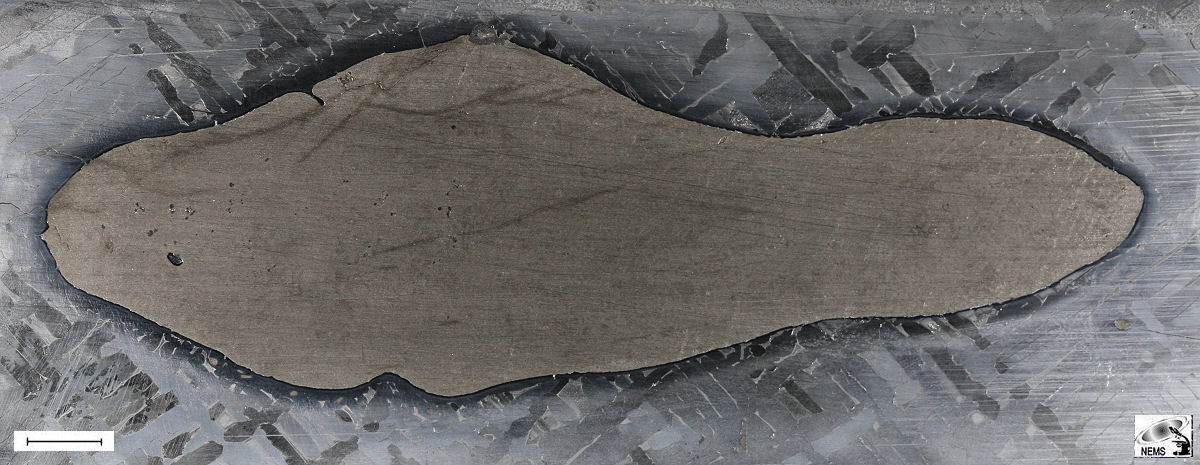 |
| Figure 5. Scale
bar 5.3 mm. Cape York Cape York, TKW is around 51 ton, with several large individuals recovered presenting researchers with an abundance of sample material for study. The troilite nodule shown above is 11 cm in length. Buchwald, (1975), suggests a gravity field in the parent body - see next image. |
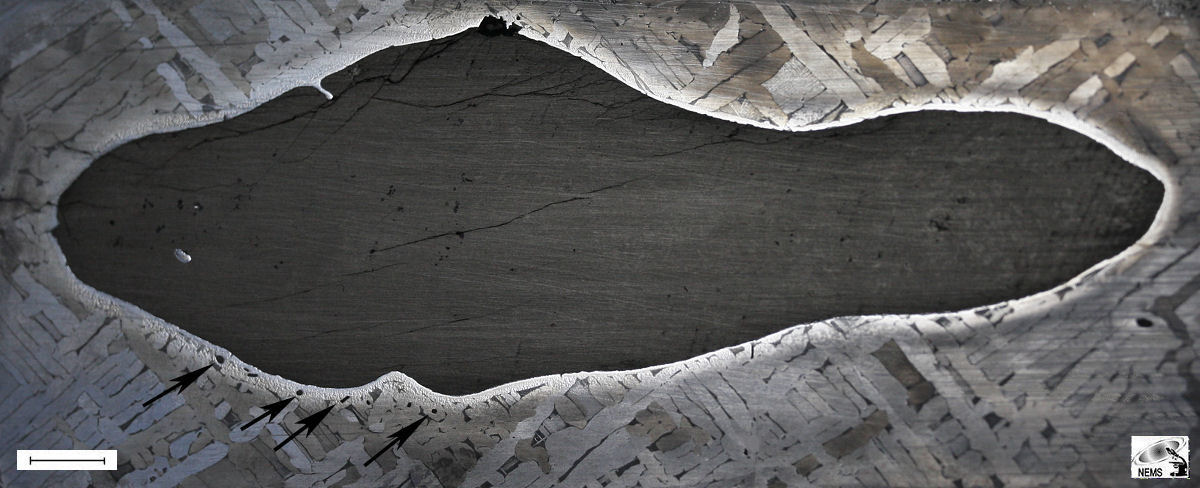 |
| Figure 6. Scale bar 5.3 mm. Cape York |
| The troilite in
Cape York contains several accessory minerals. One of the most important is
chromite appearing as 0.2 -3 mm crystals. It is undissolvable in troilite even
at high temperatures. A few other accessory minerals in minor quantities - vanadium, manganese, and zinc in solid solution - are also occasionally seen attaining sizes of 0.1 to 0.2 mm in Cape York. Buchwald (1975) noted that chromite and these accessory minerals are concentrated at one end of the elongated troilite nodules Cape York went through a molten stage on an asteroid with a gravity field. These accessory minerals moved through the molten troilite settling just outside of the nodule as the cooling front passed through the metal where they were trapped in clusters. |
| The black arrows mark inclusions of chromite and other accessory minerals. |
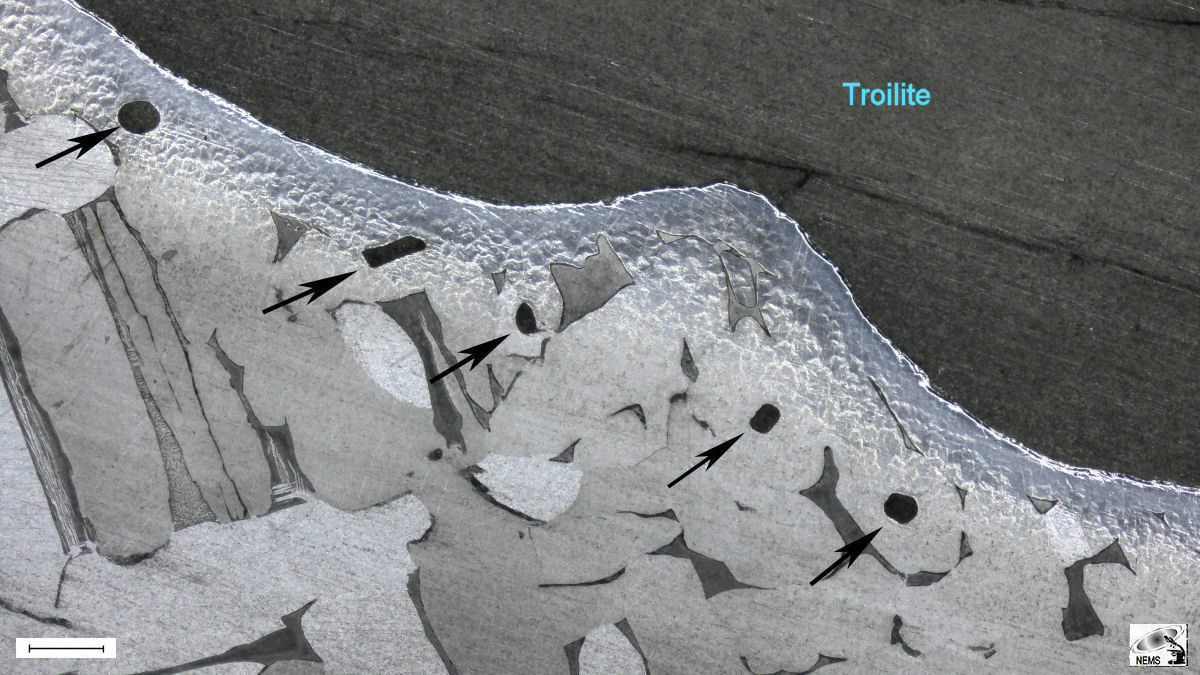 |
| Figure 7. Scale bar 300 µm. Cape York, inclusions of chromite, other, that settled out of the cooling troilite. |
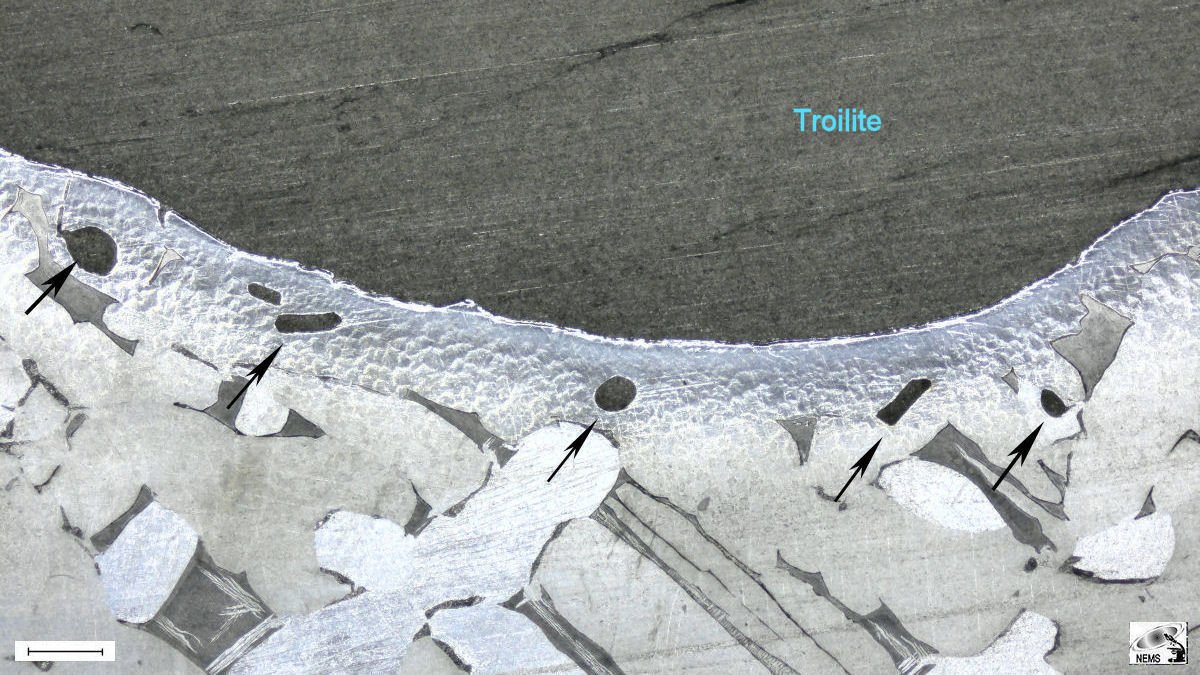 |
| Figure 8. Scale bar 300 µm. Cape York, inclusions of chromite, other, that settled out of the cooling troilite |
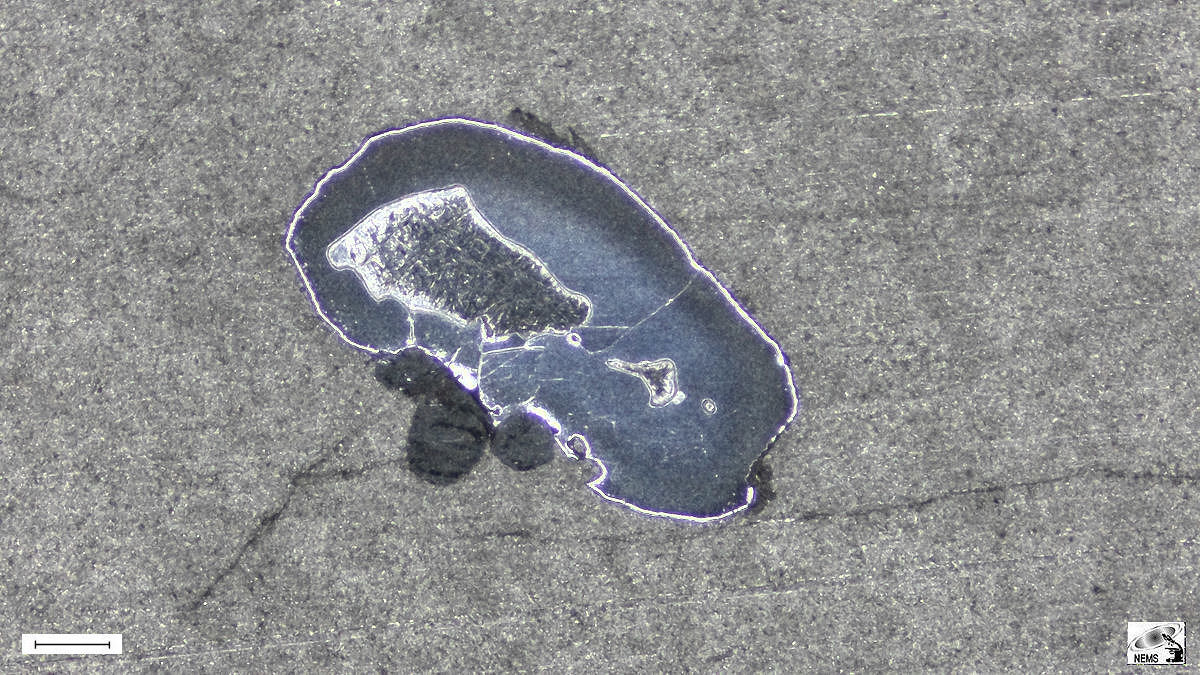
| Figure 9. Scale bar 100 µm. Cape York, internal metal bleb with a martensitic interior. This inclusion can be located in the left side of the troilite nodule seen in Figure 6. |
| . |
 |
| Figure 10. Scale bar 1.5 mm. Meteorite - Odessa Classification - IAB coarse octahedrite, 7.2% Ni. |
| Structurally, the troilite/graphite nodule is similar to Figure 1. |
| Return to Contents |
| ... |